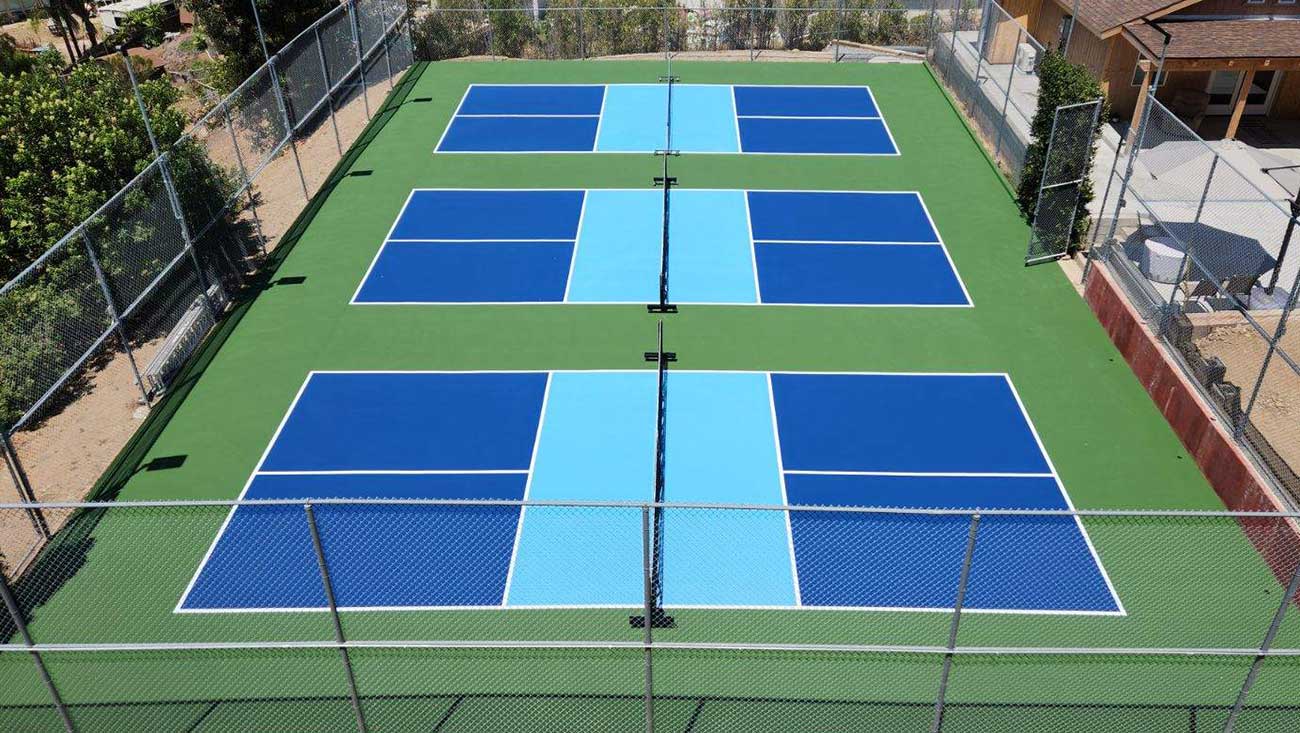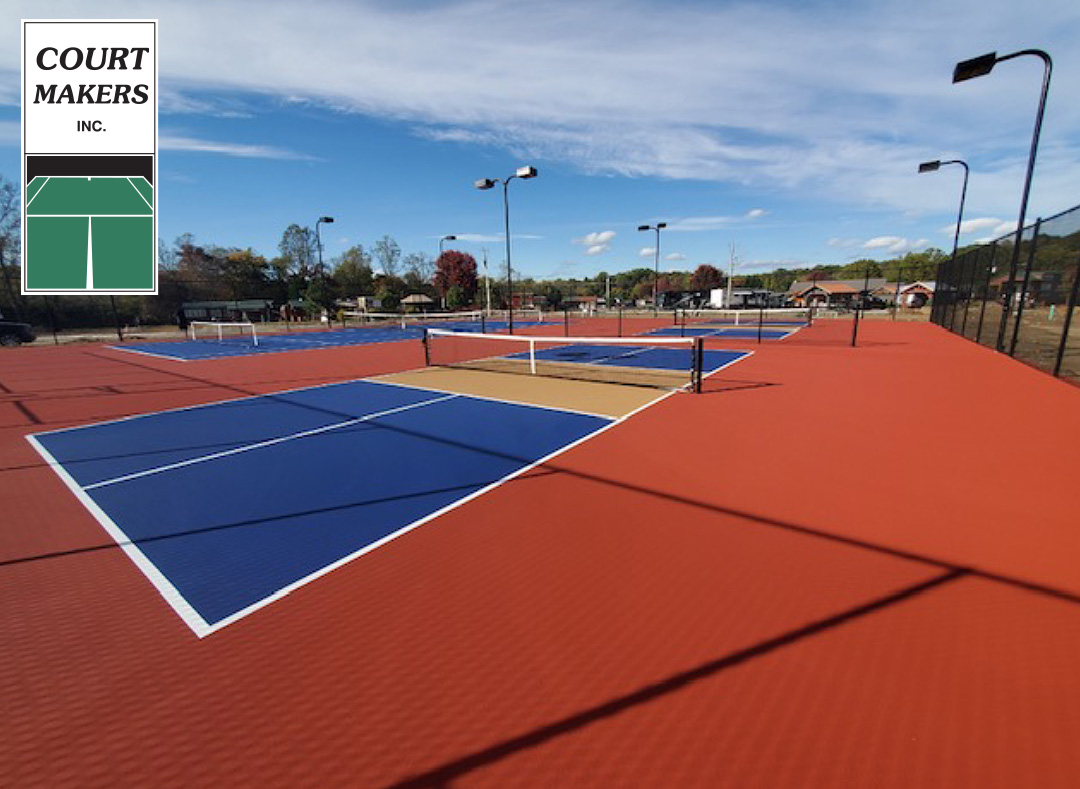Why You Need To Work With a Specialized Pickleball Court Construction Company
Important Actions for Effective Pickleball Court Construction
Creating a pickleball court needs careful consideration of numerous aspects to guarantee an optimal having fun atmosphere. Additionally, accurate adherence to court dimensions and internet specs is important for justness in play.
Determine Court Place

Alignment is one more vital variable; courts must be positioned to minimize glare from the sunlight, ideally running north-south. This orientation aids players keep aesthetic clarity during play, specifically during morning or late afternoon sessions. Additionally, the surrounding setting ought to be evaluated for possible interruptions, such as noise from web traffic or nearby tasks, which may interfere with the enjoyment of the game.
Accessibility for all gamers, including those with handicaps, should additionally be prioritized in the option of the court area. Appropriate pathways and seating locations should be integrated right into the design to suit everyone. In summary, a well-balanced court area not only boosts play problems yet likewise advertises a welcoming ambience for players of all skill degrees.
Select Appropriate Products
Choosing proper materials for the building of a pickleball court is basic to guaranteeing a high-grade playing surface and durability - Pickleball court construction company. The option of materials straight influences the performance of the court, player safety and security, and upkeep requirements

Along with the surface area, selecting suitable web blog posts and nets is crucial. Steel messages, powder-coated for weather condition resistance, make certain stability and longevity. The web itself must be of high-quality nylon or polyester, developed to endure wear and preserve stress with time.

Understand Court Dimensions
Just how can understanding the details dimensions of a pickleball court boost both gameplay and player experience? Knowledge with court dimensions is critical for optimal play, making certain that players can successfully strategize and execute their shots. A common pickleball court measures 20 feet large and 44 feet long for both songs and doubles suits, with a non-volley area, or kitchen, prolonging 7 feet from the web on either side. This format influences shot choice, placing, and total gameplay dynamics.
Correct adherence to court dimensions permits fair play and adherence to official guidelines, cultivating a competitive atmosphere. Additionally, recognizing these dimensions help in player safety by stopping overcrowding in marked locations. The net height is also an essential facet, set at 36 inches at the sidelines and 34 inches at the center, which affects the trajectory of returns and serves.
Furthermore, accurate measurements help with the building of courts that fit varying skill levels, enhancing the overall gamer experience (Pickleball court construction company). By ensuring that measurements are properly applied, gamers can take part in a balanced and enjoyable video game, eventually promoting the growth of pickleball as a popular sporting activity
Pick Surface Type
Choosing the appropriate surface area kind for a pickleball court is necessary for enhancing player performance and making certain safety and security. The most common surface area materials include asphalt, concrete, and specialized sporting activities surface areas, each offering distinct advantages and considerations.
Asphalt courts are preferred as a result of their toughness and cost-effectiveness. They provide good grip and are fairly easy to keep, making them appropriate for community tasks. They may call for periodic resurfacing to keep optimal having fun conditions.
Concrete surface areas are another sensible choice, recognized for their stamina and durability. They offer a regular playing experience and can be completed with different appearances to improve grasp. Concrete can be hard on the joints, which might lead to gamer tiredness over expanded play.
Specialized sports surfaces, such as modular or acrylic ceramic tile systems, provide specifically to pickleball. These surfaces usually offer premium shock absorption and traction, improving gamer convenience and efficiency. Nevertheless, they might entail higher preliminary prices and upkeep considerations.
Inevitably, selecting the best surface area kind calls her comment is here for careful factor to consider of budget, anticipated use, and desired playing attributes to develop a enjoyable and safe pickleball setting.
Plan for Drainage and Illumination
Efficient preparation for water drainage and lighting is essential in the construction of a pickleball court, as it straight influences both playability and security. Appropriate drain systems make sure that water does not build up on the court surface area, which can lead to hazardous playing conditions and long-term damage to the surface. Implementing a well-designed drainage strategy involves evaluating the website's topography, dirt kind, and regional climate conditions. It is important to integrate sloping surfaces that direct water away from the court and utilize appropriate water drainage products, such as perforated pipelines and gravel, to facilitate efficient water drainage.
Along with drainage, ample illumination is important for expanding playtime and enhancing safety and security during night suits. The lighting layout must offer consistent illumination throughout the court, lessening shadows and glow. This can be achieved with the setup of pole-mounted LED lights that are positioned at suitable elevations and angles. click for source It is necessary to take into consideration regional regulations pertaining to light contamination and make sure that the lighting system does not adversely influence surrounding homes. By resolving both drain and lights effectively, the building of a pickleball court can fulfill the needs of players while advertising a enjoyable and risk-free setting.
Verdict
In final thought, successful pickleball court building and construction requires careful factor to consider of several elements, consisting of place, materials, measurements, surface lighting, kind, and drain. By sticking to these necessary steps, the building and construction process can generate a top notch court that satisfies the demands of players while advertising the sport's development and accessibility.
When preparing the construction of a pickleball court, choosing an appropriate court place is essential for ideal playability and accessibility. Appropriate water drainage systems guarantee that water does not gather on the court surface, which can lead to harmful websites playing conditions and lasting damages to the surface area - Pickleball court construction company. It is vital to include sloping surfaces that guide water away from the court and make use of appropriate drain products, such as perforated pipelines and gravel, to assist in reliable water runoff
By attending to both water drainage and lighting efficiently, the building and construction of a pickleball court can fulfill the needs of players while promoting a delightful and safe atmosphere.
In final thought, effective pickleball court building and construction requires careful consideration of several aspects, consisting of location, materials, dimensions, surface illumination, type, and drain.